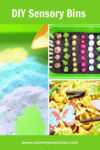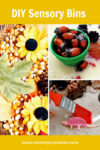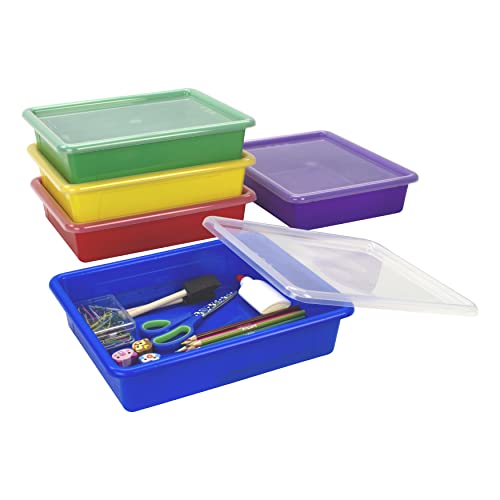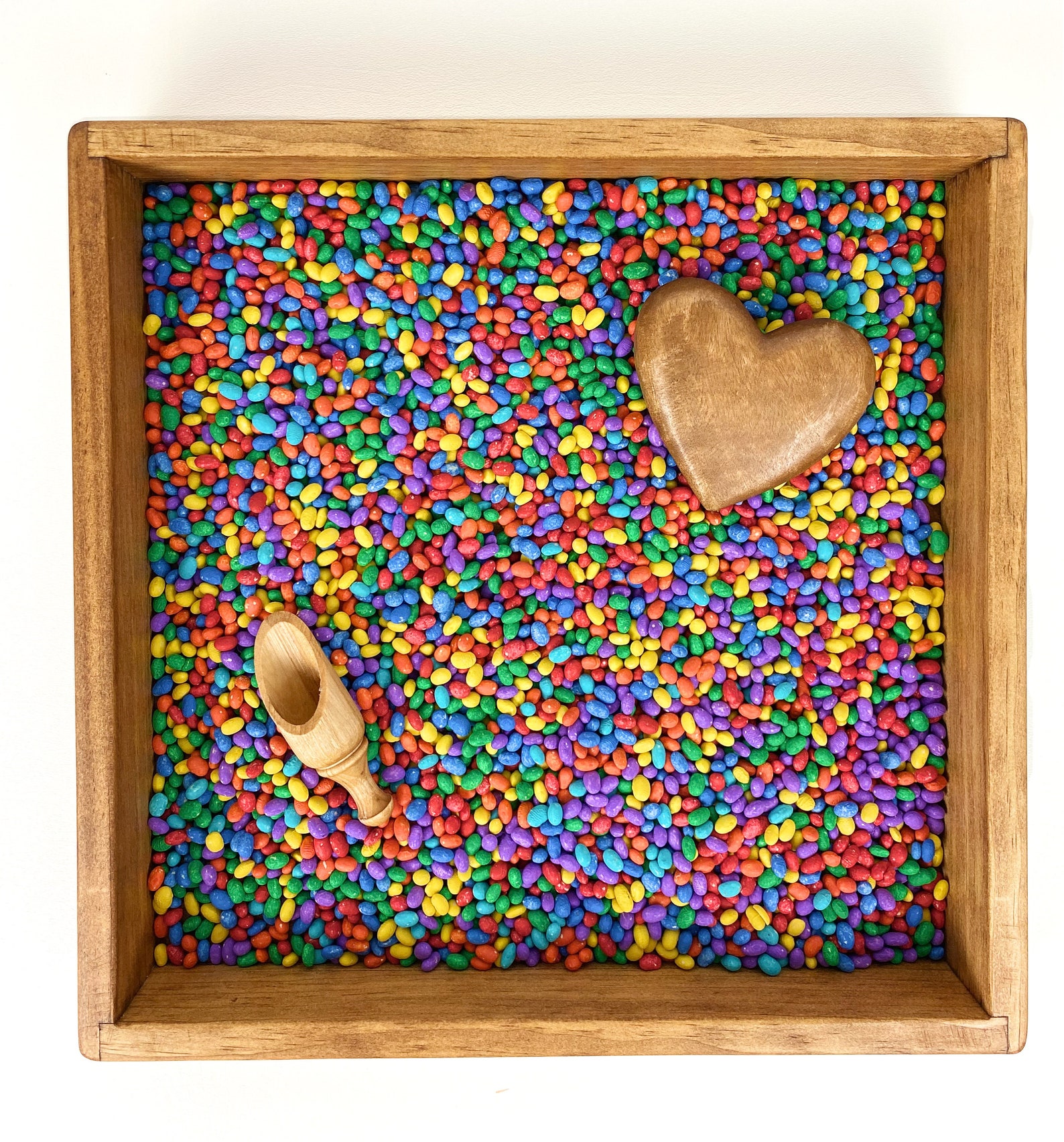DIY Sensory Bins
Embark into the world of DIY sensory bins – an exciting journey into creating engaging and enriching experiences for your child here on Mommy Evolution.
Sensory bins are tactile-rich activities designed to stimulate a child’s senses, fostering exploration, creativity and cognitive development.
Crafting your own sensory bins provides the flexibility to tailor activities to your child’s preferences and developmental needs while utilizing everyday materials.
This post contains affiliate links.
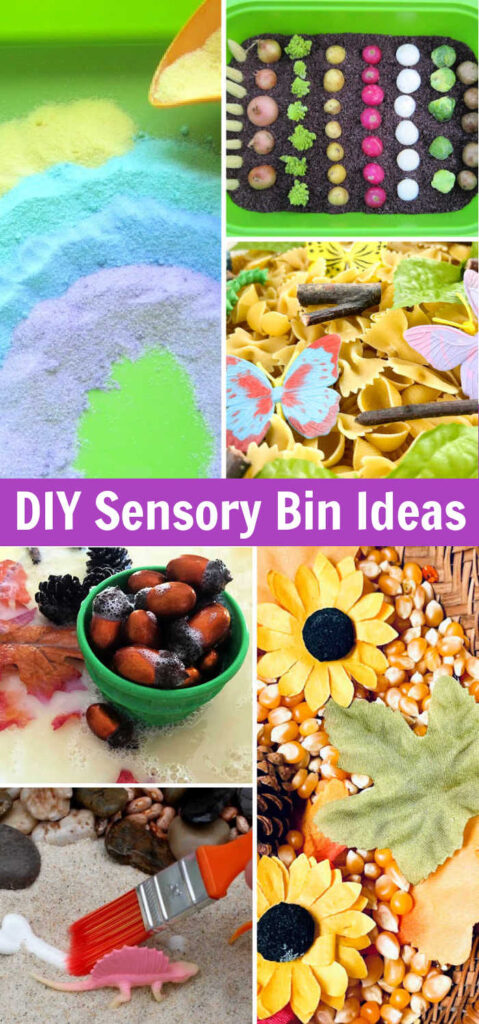
From exploring various textures to enhancing fine motor skills, DIY sensory bins are a versatile and cost-effective way to provide hours of educational and entertaining play for children of all ages.
So, gather your materials and let the imaginative sensory adventures begin! And for more sensory adventures, browse through our Fun Sensory Activities by Theme.
Sensory Bin Learning
Sensory bin learning transforms play into a dynamic educational experience, fostering exploration and development across various senses.
- Butterfly Life Cycle Sensory Bin
- Find The Magnetic Letter
- Digging for Dinosaurs Sensory Bin
- Dinosaur Sensory Bin
Bins with Water
Water sensory bins bring a splash of learning and play, offering children a dynamic aquatic environment to explore and discover.
Farm Sensory Bins
Farm sensory bins cultivate an immersive and educational play experience, inviting children to engage with the sights, sounds and textures of the farmyard.
Holiday Theme Ideas
Holiday-themed bins infuse the spirit of celebration into learning, providing children with festive and engaging tactile experiences that correspond to various holidays throughout the year.
- St. Patrick’s Day Fine Motor Sensory Bin
- Easter Bunny Sensory Bin
- Thanksgiving Gratitude Turkey Sensory Bin
Seasonal Theme Bins
Seasonal theme sensory boxes offer a rotating palette of textures and objects, connecting children with the changing seasons through hands-on exploration and imaginative play.
Food Related Sensory Bins
Food-related sensory bins turn playtime into a delicious exploration, allowing children to engage with various textures, scents and colors inspired by different culinary delights.
Sensory Bin Toys, Tools and Fillers
Sensory bin toys, tools and fillers serve as the building blocks for enriching play experiences, offering a diverse array of items carefully selected to stimulate a child’s senses and promote exploration.
- Ultimate List of Sensory Bin Tools
- Ultimate List of 100+ Sensory Bin Fillers
- Easy DIY Colored Salt
- 2-Ingredient Fake Snow
- Oobleck Slime
- Cloud Dough
More Sensory Bin Ideas
Dive into a world of endless creativity and learning with a variety of sensory bin ideas that spark imagination, fine-tune motor skills and make every playtime an adventure for kids.
- Valentine’s Day Sensory Bins
- Spring Sensory Bins
- St. Patrick’s Day Sensory Bins
- Easter Sensory Bins
- Fall Sensory Bins
- Halloween Sensory Bins
- More Halloween Sensory Bins
- Thanksgiving Sensory Bins
- Christmas Sensory Bins
- Winter Sensory Bins
Why Sensory Bins Are Important
Sensory bins hold significant importance in child development as they provide a holistic and engaging approach to learning. Here are several reasons why they are considered crucial for children by many educational professionals:
Sensory Stimulation: They offer a variety of textures, colors and materials that stimulate a child’s senses, including touch, sight and sometimes even smell. This rich sensory input helps in the development and refinement of sensory processing skills.
Cognitive Development: Engaging with different materials in a sensory bin encourages cognitive exploration. Children can practice skills such as sorting, counting and categorizing, fostering early math and literacy concepts.
Fine Motor Skills: Manipulating objects within a sensory bin, whether it’s pouring, scooping or pinching, helps refine fine motor skills. These activities strengthen the small muscles in the hands and fingers, preparing them for tasks like writing.
Storex Letter Size Flat Storage Trays 4 Large Clear Plastic Storage Container Clip Box with Latching Lids
4 Large Clear Plastic Storage Container Clip Box with Latching Lids Large Clip Box, Clear with Blue Aquarium Latches
Large Clip Box, Clear with Blue Aquarium Latches Large Primary Plastic Storage Bins
Large Primary Plastic Storage Bins
Language Development: They provide opportunities for rich vocabulary development. Describing the textures, colors and shapes of the materials enhances a child’s language skills and ability to express themselves.
Creativity and Imagination: The open-ended nature of sensory play encourages creativity and imaginative thinking. Children can create stories, build scenes and engage in pretend play within the sensory bin environment.
Emotional Regulation: Sensory play has a calming effect on many children. It provides a safe and controlled space for them to explore and express their emotions. The tactile experiences can be particularly soothing.
Social Skills: When children share a sensory bin, they learn valuable social skills such as cooperation, sharing and communication. Joint exploration of the materials can enhance social interactions.
Inclusive Learning: Sensory bins can be adapted to accommodate various learning styles and sensory preferences. They provide an inclusive learning environment that caters to individual needs.
Outer Space Sensory Bin Made By Me Explore + Create Unicorn Sensory Bin
Made By Me Explore + Create Unicorn Sensory Bin Dazmers Farm Animal Toys Sand Sensory Bin
Dazmers Farm Animal Toys Sand Sensory Bin Water and Sand Sensory Bin
Water and Sand Sensory Bin
Focus and Attention: Engaging in sensory activities helps children develop focus and attention skills. The hands-on nature of sensory play captures their interest and encourages sustained attention to the task at hand.
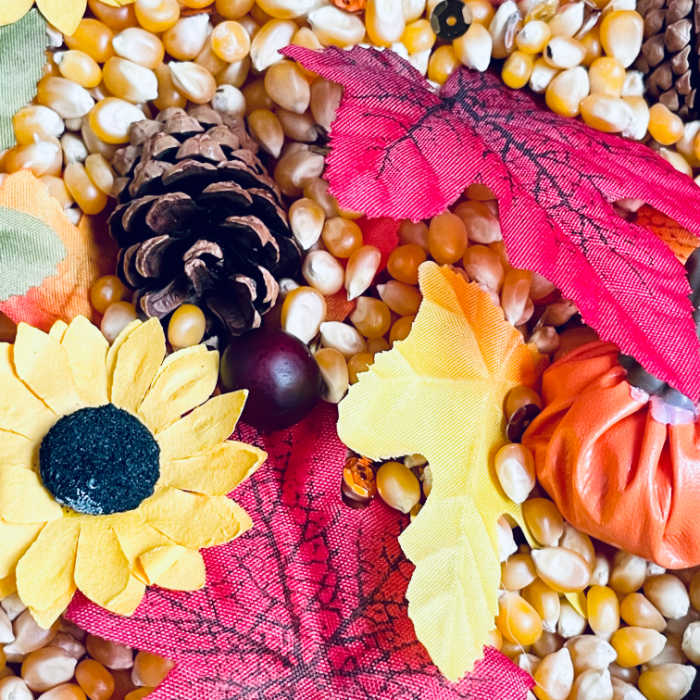
Sensory bins are versatile tools that contribute to the holistic development of children, addressing various aspects of physical, cognitive and socio-emotional growth in a fun and interactive way.
Types of Sensory Bins
From nature exploration bins with leaves and stones to water play bins with floating toys, these bins offer diverse tactile experiences.
You can create themed bins, like color sorting or seasonal bins, enhancing learning through play.
Texture exploration bins focus on different tactile sensations, while letter or number recognition bins incorporate educational elements.
Crisschirs Sensory Bin Tools with Wooden Box Toddler Sensory Kids Table with Lid
Toddler Sensory Kids Table with Lid Fine Motor Toys Counting Sorting Bin Filler
Fine Motor Toys Counting Sorting Bin Filler Micro Mini Construction Vehicles for Sensory Play
Micro Mini Construction Vehicles for Sensory Play
Sensory scented and edible bins add olfactory and taste dimensions.
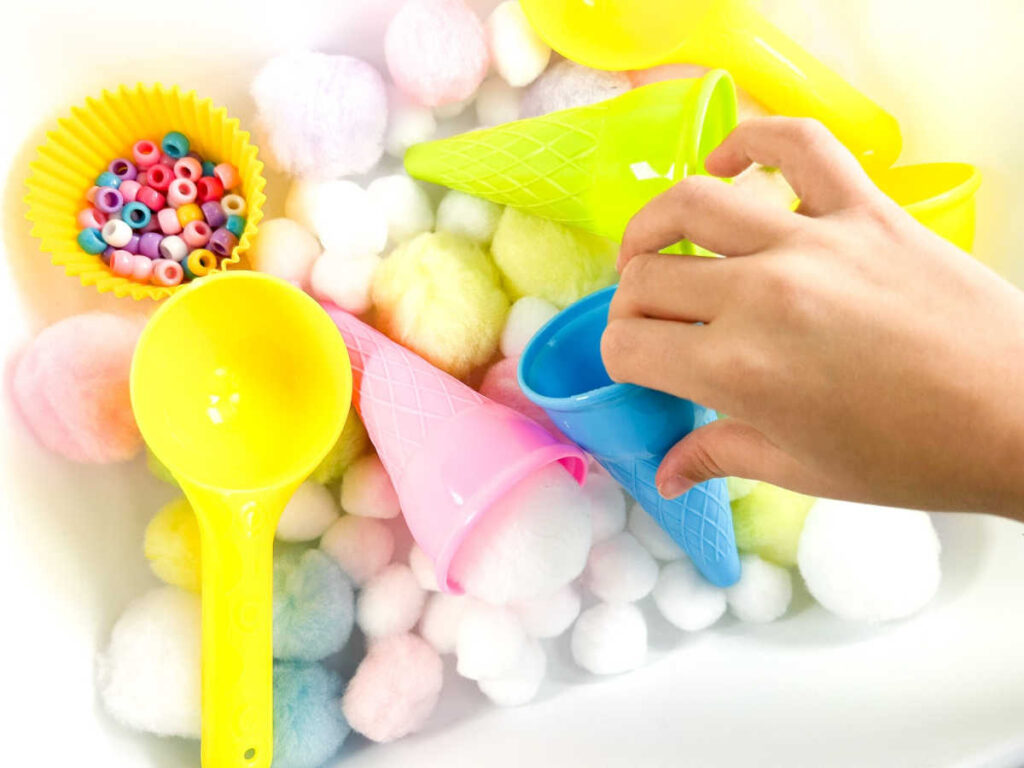
Whether filled with rice, water or themed props, sensory bins are versatile tools for age-appropriate play and learning.
Are Sensory Bins Montessori
Yes, they align well with Montessori principles, although they are not exclusive to the Montessori method. In Montessori education, the emphasis is on providing children with hands-on, experiential learning opportunities that engage the senses and promote independent exploration.
Sensory bins naturally fit into this philosophy by offering a tactile-rich environment that stimulates the senses. While they are compatible with Montessori principles, they are also widely used in various educational settings and home environments.
Alphabet Sensory Bin Filler Colored Rice Sensory Bin Filler
Colored Rice Sensory Bin Filler Rainbow Beans Sensory Filler
Rainbow Beans Sensory Filler Pastel Rainbow Beans Filler
Pastel Rainbow Beans Filler
The key is to adapt the sensory bin activities to meet the developmental needs and interests of the child, fostering a love for learning through hands-on experiences.
Where To Buy Sensory Bins
If you don’t feel like making your own, both physical and online educational toy stores, including giants like Amazon, offer a diverse selection for different age groups. Specialty stores such as Lakeshore Learning or Discount School Supply, as well as local craft stores, are good options.
You can also explore independent sellers on platforms like Etsy or consider creating your own with containers and fillers from stores like IKEA or Walmart.
I personally like Etsy for great sensory bins:
- Color Matching Sensory Bin
- Ice Cream Sensory Bin
- Alphabet Pictures Sensory Bin
- Under the Sea Sensory Bin
- Letters Matching Sensory Bin
- Hot Chocolate Sensory Bin
- Apples Orchard Play Sensory Bin
As always, prioritize age-appropriate materials for a personalized and safe sensory experience for your child
Want more sensory ideas? Be sure to check out our other fun sensory activities for kids!

